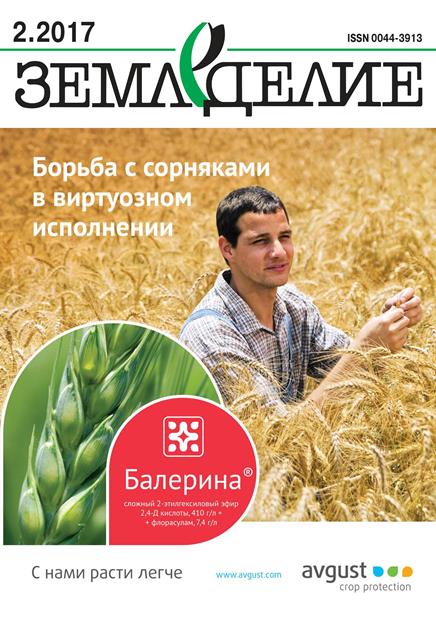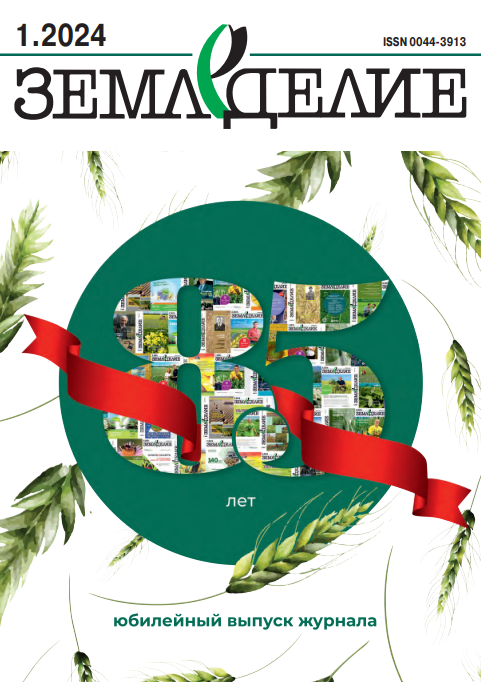Развитие учения о севообороте в РГАУ-МСХА им. К.А. Тимирязева
Земледелие, 2017, № 2
УДК 631.582:631/635
В.Г. ЛОШАКОВ, доктор сельскохозяйственных наук, главный научный сотрудник
Адрес электронной почты защищен от спам-ботов. Для просмотра адреса в вашем браузере должен быть включен Javascript.
Всероссийский научно-исследовательский институт агрохимии им. Д.Н. Прянишникова, ул. Прянишникова, 31а, Москва, 127550, Российская Федерация
Поэтапный анализ развития учения о севообороте за 150-летнюю историю существования РГАУ-МСХА им. К.А. Тимирязева свидетельствует о том, что исторически этот процесс был тесно связан с научно-техническим прогрессом и развитием естествознания. В научных трудах выдающихся ученых старой Петровки и Тимирязевки прослеживается сложный, иногда противоречивый и подверженный влиянию идейно-политической конъюктуры путь развития учения о севообороте – теоретической основе всех систем земледелия – от трехпольных зерно-паровых чередований до плодосменных и многопольных травопольных севооборотов, от плодосмена и травополья к современным специализированным адаптивным севооборотам с распространением приемов биологизации и экологизации земледелия путем широкого использования посевов бобовых и промежуточных культур, сидерации и фитомелиорации. В нашей стране в послевоенный период все это происходило на фоне стремительно развивающейся интенсификации земледелия на базе его химизации, мелиорации и комплексной механизации, которая, как и во всем мире, вместе с ростом продуктивности полей породила рях экологических проблем. Результаты широкомасштабных и длительных исследований, организованных учеными Тимирязевки во второй половине ХХ века в академии и по зонам страны, показали, что даже при самом высоком уровне интенсификации земледелия нарушение научно обоснованных севооборотов приводит к снижению урожайности в среднем в 1,5-1,7 раза, сопровождается деградацией почв, массовым распространением и поражением культурных растений болезнями, вредителями и сорняками. При этом даже в условиях затяжного экономического кризиса севооборот по-прежнему остается основополагающим, научно обоснованным звеном современных систем земледелия и агротехнологий, базирующихся на принципах адаптивного использования достижений селекции растений в сочетании с последними достижениями агрохимии и агроэкологии в условиях экологически безопасного агроландшафта.
Ключевые слова: севооборот, монокультура, плодосмен, клевер, система земледелия, многолетние травы, плодородие почвы, урожай, промежуточные культуры.
Для цитирования: Лошаков В.Г. Развитие учения о севообороте в РГАУ-МСХА им. К.А. Тимирязева. Земледелие. 2017. № 2. С. 3-9.
Development of the Doctrine about Crop Rotation in RSAU-MTAA
V. G. Loshakov
D.N. Pryanishnikov All-Russian Research Institute of Agrochemistry, ul. Pryanishnikova, 31 a, Moskva, 127550, Russian Federation
The stepped analysis of the development of the crop rotation doctrine during the 150-year history of Russian State Agrarian University - Moscow Timiryazev Agricultural Academy shows that historically this process was closely associated with scientific and technological progress and development of natural science. In the learned works of the outstanding scientists of old “Petrovka” and “Timiryazevka” it is traced a complex, sometimes contradictory and subjected to the influence of ideological and political conjuncture, way of development of the doctrine about crop rotation, which is the theoretical basis for all systems of farming and crop rotations: from three-field grain-fallow rotations to succession cropping and multiple-field grass crop rotations; from succession cropping and multiple-field grass crop rotations to modern specialized adaptive crop rotations using the methods of biologization and ecologization of agriculture through the wide use of legumes and cover crops, green manuring and phyto-amelioration. In the postwar period in our country these processes occurred together with rapidly growing intensification of agriculture on the basis of its chemicalization, irrigation and integrated mechanization, which, as elsewhere in the world, with the increase in the productivity of fields generated a number of environmental problems. The results of large-scale and long-term studies that were organized at a high scientific and methodological level by scientists of the institute in the second half of the twentieth century in the Academy and in the zones of the country showed that even at the highest level of agriculture intensification a violation of science-based crop rotations leads to a decrease in crop yields on average 1.5-1.7 times, which is accompanied by soil degradation and massive spread of plant diseases, pests and weeds. The results of numerous studies in recent decades, conducted in the regions of our country under the scientific and methodical supervision of the scientists of the institute, have also showed that even under the conditions of a lingering economic crisis, crop rotation remains a fundamental scientific component of modern farming systems and agricultural technologies, based on the principles of adaptive use of plant breeding achievements in combination with the latest achievements of agrochemistry and agroecology in terms of environmentally safe agricultural landscape.
Keywords: crop rotation, monoculture, rotation, clover, farming system, perennial grasses, soil fertility, yield, intermediate crops.
Author Details: V.G. Loshakov, D. Sc. (Agr.), chief research fellow (e-mail: LVG36@ yandex.ru).
For citation: Loshakov V.G. Development of the Doctrine about Crop Rotation in RSAU-MTAA. Zemledelie. 2017. No 2. Pp. 3-9 (in Russ.)










